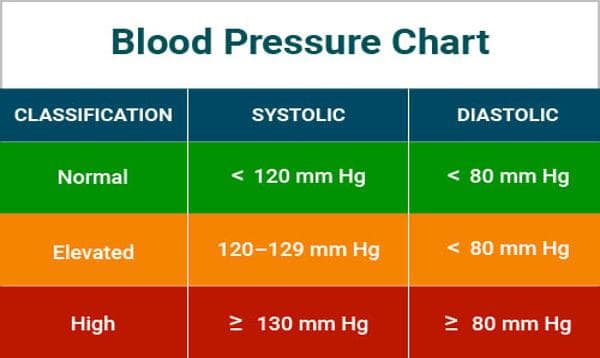
Mean Arterial Pressure (MAP) Calculator – A Key Indicator of Circulatory Health
Discover Mean Arterial Pressure (MAP), its significance, calculation, and how to use it to assess circulatory health.
January 5, 2025
Learn about Blood Pressure, its significance, classification, and how to use it to maintain healthy blood pressure levels.

Blood Pressure is the force of blood against the walls of your arteries as your heart pumps it around your body. It is measured in millimeters of mercury (mmHg) and recorded as two numbers:
A typical blood pressure reading is expressed as systolic over diastolic, such as 120/80 mmHg.
Classifying blood pressure is crucial for identifying and managing potential health risks. High blood pressure, or hypertension, can lead to serious health issues like heart disease, stroke, and kidney problems. By classifying blood pressure levels, individuals can take appropriate steps to maintain healthy blood pressure and reduce the risk of complications.
To classify your blood pressure:
Several factors can influence blood pressure levels:
Managing high blood pressure involves lifestyle changes and, in some cases, medication:
Incorporate nutrient-rich foods and limit processed foods high in sodium and unhealthy fats.
Engage in activities like walking, cycling, swimming, or strength training.
Practice relaxation techniques such as deep breathing, meditation, or yoga.
Achieve and maintain a healthy weight through diet and exercise.
Quit smoking and limit alcohol intake to maintain healthy blood pressure.
Our Blood Pressure Classification Calculator is user-friendly and provides an estimate of your blood pressure category. Enter your systolic and diastolic readings to determine your blood pressure classification. Use this information to take appropriate steps to maintain or improve your blood pressure levels.
There are several myths about blood pressure that can lead to confusion:
Understanding and tracking your blood pressure levels is essential for maintaining overall health. Use our Blood Pressure Classification Calculator to classify your blood pressure and take proactive steps to manage it. By making healthy lifestyle choices, you can maintain healthy blood pressure levels and reduce the risk of heart disease and other complications.
More Articles

Discover Mean Arterial Pressure (MAP), its significance, calculation, and how to use it to assess circulatory health.
January 5, 2025

Learn about Cholesterol Ratio, its significance, calculation, and how to use it to assess your heart disease risk.
January 5, 2025

Learn about stroke, its risk factors, assessment, and how to use the Stroke Risk Assessment Calculator to measure your risk level and improve your health.
January 5, 2025

Learn about Coronary Heart Disease (CHD), its risk factors, calculation, and how to use the information to maintain heart health.
January 5, 2025

Learn about LDL and HDL Cholesterol, their differences, importance, and how to use the LDL & HDL Cholesterol Difference Calculator to maintain healthy cholesterol levels.
January 5, 2025